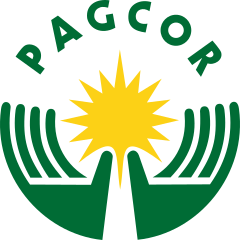

THOR138 Daftar Situs Slot Gacor Gampang Menang Maxwin Terbaru 2024 Di Indonesia Hari Ini
Dengan sukacita, kita sangat ingin mempersembahkan THOR138 untuk menjadi suatu destinasi terbaru & terpercaya untuk memberikan pengalaman terbaik dalam bermain judi slot gacor gampang menang yang sangat seru sekali dan memberikan jackpot maxwin besar! Kita membangun kerja sama dengan pencipta slot online terkenal hanya untuk menyuguhkan koleksi game slot yang lengkap, dengan tingkat kemenangan tertinggi dibandingkan dengan situs slot gacor lainnya. Situs THOR138 sudah menjalankan evolusi slot gacor online yang sangat signifikan.
Terdapat satu daya tarik yang begitu melekat dengan THOR138 merupakan aksesibilitasnya yang sangat memungkinkan para bettor dalam bermain judi slot di situs slot gacor hari ini menggunakan komputer atau handphone yang memiliki koneksi sinyal internet yang cepat & lancar. Kita memberikan berbagai provider slot gacor yang sangat banyak sekali, serta kesempatan melakukan withdraw yang sangat menggiurkan nafsu. THOR138 telah diakui sebagai simbol dari situs slot gacor yang mungkin paling dicari serta mendapatkan nama popularitas yang tinggi diantara kalangan bettor pecinta slot gacor.
Misi & tujuan pertama kita di THOR138 ialah memberi tahu tentang platform situs slot gacor hari ini yang sudah sering memenuhi dompet dan expetasi yang tinggi bagi para pemain. Kami mempunyai komitmen yang akan memberikan pelayanan terbaik kepada bettor. Menjaga keamanan akun dan data pribadi bettor adalah prioritas utama kita, dan kita juga memberikan jaminan bahwa informasi yang kalian isi agar tetap aman. Segeralah daftarkan akun kalian untuk menikmati semua fasilitas dan sensasi memainkan game slot gacor terbaru dengan menggunakan 1 akun, dan kalian juga jangan lupa bahwa kami juga memiliki dan menyediakan aplikasi slot yang bisa di dwonload dengan mudah untuk kalian.

3 Provider Slot Gacor Terpercaya Paling Gampang Menang Maxwin Setiap Hari Dengan Depo Murah
Slot Gacor Pragmatic
Gates Of Olympus : Rtp 97% Bermain Jam 18.30 - 23.30
Sweet Bonanza : Rtp 98% Bermain Jam 00.30 - 05.30
Madame Destiny : Rtp 97% Bermain Jam 06.30 - 13.30
Starlight Princess : Rtp 93% Bermain Jam 14.00 - 18.30
Juicy Fruits : Rtp 97% Bermain Jam 18.00 - 00.30
Slot Gacor Pg Soft
Mahjong ways 2 : Rtp 98% Bermain Jam 15.10 - 20.30
Mahjong ways : Rtp 95% Bermain Jam 10.00 - 16.30
Galatic Gems : Rtp 98% Bermain Jam 16.10 - 21.30
Lucky Neko : Rtp 97% Bermain Jam 09.10 - 16.00
Ganesha Fortune : Rtp 95% Bermain Jam 11.11 - 16.30
Slot Gacor Joker123
Roma : Rtp 97% Bermain Jam 16.00 - 23.00
Roma Legacy : Rtp 94% Bermain Jam 15.30 - 19.00
Archer : Rtp 93% Bermain Jam 10.00 - 16.00
Hercules : Rtp 98% Bermain Jam 17.00 - 23.30
Lucky God : Rtp 95% Bermain Jam 16.30 - 21.45

THOR138 Situs Slot Gacor Online Terbaru Gampang Maxwin 2024
Mengenal Lebih Dalam Perumpamaan Slot Gacor Maxwin Hari Ini Gampang Menang Maxwin
Pastinya kalian sering mendengar istilah kata tentang "gacor" disaat kalian bermain slot online. Kata gacor ini dipergunakan untuk menunjuk pada keberadaan situs slot gacor yang sangat mampu menghasilkan kemenangan jackpot maksimal atau biasanya dikenal dengan sebutan "maxwin". Begitu juga sebaliknya, apabila sebuah link situs tidak pernah ataupun jarang sekali memberikan kemenangan, juga sering sekali di sebut dengan kata "rungkad". Ciri yang khas dari situs slot gacor hari ini bisa kalian kenali dari pilihan serta koleksi dari mesin slot yang mempunyai tingkatan RTP slot tertinggi, dan biasanya tingakat itu berada di atas 95%, sehingga bisa meningkatkan angka dan tingkat kemenangan yang tinggi.

Daftar Game Slot Gacor Hari Ini Gampang Menang Maxwin Di Situs Thor138
Daftar Rekomendasi 7 Permainan Situs Slot Gacor Hari Ini Dengan RTP Tinggi
Didalam dunia game slot, memiliki total game lebih dari 1000 jenis game yang bisa dapat kalian nikmati. Tapi, tidak semua game yang tersedia bisa kalian mainkan di waktu yang sama. Maka dari itu, kita ingin memberitahu bocoran informasi tentang 7 daftar game slot gacor hari ini dengan tingkat RTP slot yang tinggi. Dibawah ini adalah contoh daftar permainannya yang sering menang:
Pragmatic Play: RTP 97%
PG Soft: RTP 98%
Joker123 Slot: RTP 94%
Nolimit City Slot: RTP 96%
Habanero: RTP 98%
Playtech: RTP 95%
Microgaming: RTP 92%









